Ohio deer hunting options expand for landowners, hunters
The Ohio Landowner Hunter Access Partnership provides annual payments to landowners for providing hunting access to their property.
Read MoreThe Ohio Landowner Hunter Access Partnership provides annual payments to landowners for providing hunting access to their property.
Effective management of Ohio’s whitetail deer population depends on cooperation between the state’s landowners and hunters. To help bring the two groups together, the Ohio Department of Natural Resources administers a variety of programs to provide hunters access to land for hunting. Meanwhile, Ohio recreational user laws protect landowners from liability when they allow people to hunt on their property.
Deer and other wildlife species in Ohio are managed to balance the needs of the state’s diverse population, said David Kohler, program administrator with the Ohio Department of Natural Resources Division of Wildlife. Farmers and rural landowners, hunters and even motorists on the state’s roadways all have an interest in how deer are managed. About 7% of the state’s citizens are hunters, he added. However most of those hunters don’t own the land where they hunt.
The state’s newest program to link hunters with land was launched in 2021. The Ohio Landowner Hunter Access Partnership provides annual payments to landowners for providing hunting access to their property, said Kohler. The program uses a reservation system that allows hunters to sign up for daily hunting permits the evening before they plan to hunt.
“We wanted to provide good quality hunting access on private land and pay the landowners for it,” he said.
For Ohio hunters
The OLHAP program can be used for the daytime hunting of a variety of wildlife, but most of the hunters using it so far are hunting deer, Kohler said. The program allows archery hunting of deer but not gun hunting. To sign up, hunters register online through the ODNR website or mobile app starting at 8 p.m. for the following day. A permit gives the hunter access to the property between 5:30 a.m. and 10 p.m. “It becomes public land for those hunters for that day,” he said.
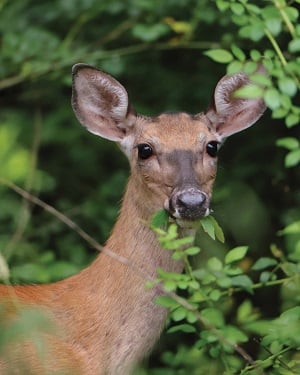 The number of daily permits for a piece of property is limited to one person for each 50 acres. That gives hunters a better experience and assures landowners that their property won’t be overrun with hunters, Kohler said. “It’s all density-based,” he added. The landowners are kept in the loop with a notification each time a hunter is issued a permit for their land.
The number of daily permits for a piece of property is limited to one person for each 50 acres. That gives hunters a better experience and assures landowners that their property won’t be overrun with hunters, Kohler said. “It’s all density-based,” he added. The landowners are kept in the loop with a notification each time a hunter is issued a permit for their land.
ODNR received $1,831,500 in grant funding from the federal government to develop the OHLAP program, and those funds cover 75% of the program costs. The federal funding comes from the 2018 Farm Bill’s Voluntary Public Access and Habitat Incentive Program. States that were awarded a grant are developing their own programs to meet the needs in their states, Kohler explained.
For Ohio landowners
For Ohio landowners, the annual payment rates vary from $2 to $30 per acre based on a scoring system that considers the habitat, size and location of the land. Forest and grassland, for instance, provides better habitat than crop ground, so it receives higher payments.
In the first year of the program, Ohio enrolled 50 properties totaling 8,500 acres in the OHLAP program. The land is located in 29 counties, but the program goal is to expand into all 88 counties, Kohler said. He’d like to see a site within about 20 minutes of every prospective hunter in the state.
For the 2021-2022 season, OHLAP issued 3,000 daily permits, mostly for deer archery hunting. The 2022-2023 OHLAP season will run from Sept. 1 through June 1, 2023.
OHLAP expands access to private land in the state, but hunters also have access to public hunting areas throughout the state, Kohler pointed out. Hunters can find some of the state’s best deer hunting opportunities on public land, especially if they are willing to seek out more remote locations.
ODNR offers additional chances to hunt through controlled hunts held in selected locations throughout the state. A lottery system is used to select hunters from those who apply for the controlled hunts.
Many hunters also contact landowners individually to arrange permission to hunt or to lease land for hunting. For all hunting on private land, hunters are required to obtain and carry permission, whether it is through OLHAP or from the landowner.
The issue of liability is a common concern for landowners when they’re deciding whether to allow hunting on their property, said Amy Milam, director of legal education and member engagement for Ohio Farm Bureau. That concern led the state legislature to pass laws providing landowners with liability protection, she explained. “The legislature enacted this statute to encourage landowners to open their land to others without fear of liability.”
Hunting is one of the “recreational pursuits” specified in the law, along with fishing, trapping, camping, hiking, swimming and operating recreational vehicles. The law applies to nonresidential premises, so it doesn’t apply to a landowner’s home or the residential area around it, Milam said. The law applies to other property such as fields, forests and streams as well as nonresidential buildings.
The law shifts responsibility for safety away from the landowner, Milam said. Under the law, when landowners give permission to hunters, the landowners don’t owe any duty to a recreational user to keep the premises safe for entry or use. And landowners don’t take on responsibility or liability for any injuries or property damage caused by an act of a recreational user, according to the law.
One key point, Milam added, is that the law does not require that a landowner keep their property open to the public at large to receive immunity. In some states, landowners must allow unrestricted access to enjoy liability protection, but Ohio law allows landowners to pick and choose who is allowed on their property and for what reason. “It does not require you to allow anyone and everyone,” she said.
It’s important to keep in mind that the law protects landowners from liability, but that doesn’t mean someone can’t file a suit, Milam added. What the law does provide is a defense if a lawsuit is filed. Landowners should still consult an attorney and respond if a suit is filed, she said.
Even though a statute is in place to protect landowners, it’s important to keep common sense safety in mind, Milam added. “At the end of the day, you still want to do what you can with the things you can control.”
Another point landowners need to understand is that the liability protection does not apply if a landowner accepts a “fee or other consideration” for hunting privileges. In other words, a landowner can’t charge admission and still enjoy the recreational user statute’s liability protection. However, Milam points out, the law does extend that liability protection to hunting leases, so landowners can lease their land without taking on more liability.
“As protection for landowners participating in the OLHAP program, the OLHAP user agreement includes additional liability protection for participating landowners,” she said. “Farm Bureau was a strong advocate for enhanced liability protection as a component of the program.”
The recreational user law does not apply to trespassers who hunt without permission, but another section of Ohio law addresses that concern, Milam said. “You shouldn’t have this extra liability because they broke the law.”
The regulations governing hunting in the state are updated annually, and ODNR publishes a summary booklet each year.
For the 2022-2023 season, deer bag limits have been updated, and changes were made in the definition of a crossbow to include various limb and stock configurations. Rules also have been changed to allow hunting with a legally concealed handgun, if it meets all the requirements for the game being hunted. Another change is the expansion of the Disease Surveillance Area to monitor Chronic Wasting Disease in deer. That area now covers all of Wyandot, Hardin and Marion counties.
For information about the Ohio Landowner Hunter Access Partnership, see the fact sheet. Additional information on Ohio’s hunting regulations, permission slips, buying hunting licenses, checking game and finding hunting locations can also be found online.
Hunters can use the HuntFish OH mobile app for licensing, checking game and communication with the Ohio Division of Wildlife through a mobile device. The app is available on Apple and Android/Google Play devices. A phone option is also available for tagging in game at 1-877-TAG-IT-OH (877-824-4864).
Violations of wildlife regulations can be reported online as well or by calling 1-800-POACHER (800-762-2437). For other questions, ODNR can be contacted by phone at 1-800-WILDLIFE (800-945-3543) or by email at [email protected].
Photos by Dave Liggett
Listen to an Our Ohio Weekly on the topic of hunting leases
Access more topics pertinent to Ohio landowners with Ohio Farm Bureau’s Landowner Toolkit
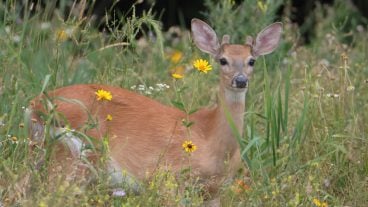
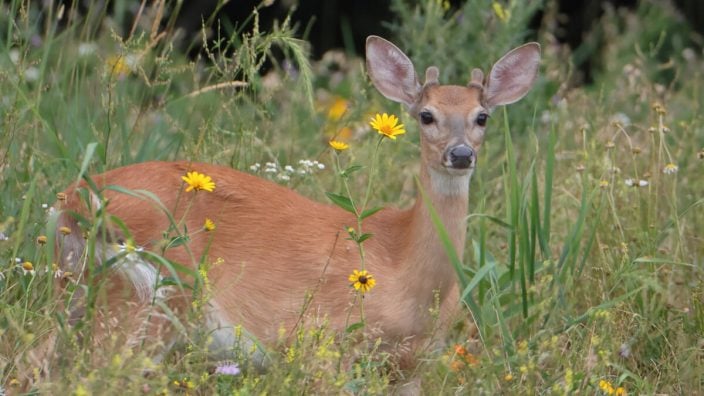
The Ohio Landowner Hunter Access Partnership provides annual payments to landowners for providing hunting access to their property.
Read More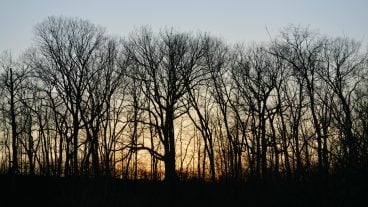
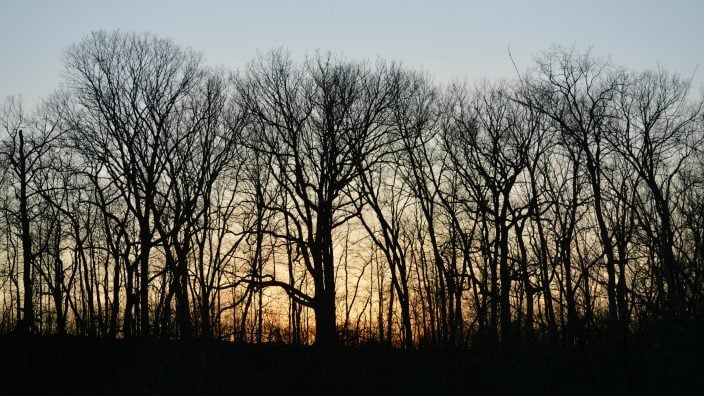
Leasing property for hunting and similar outdoor recreation has proven for many to be an attractive option when it comes to generating additional revenue for landowners, while also granting greater access to the outdoors.
Read More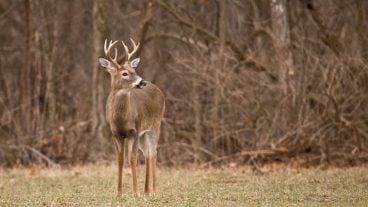
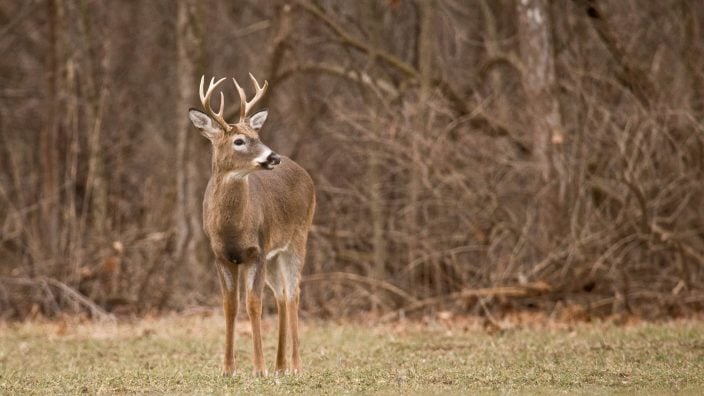
What rifle calibers are legal for Ohio deer hunting? Learn about straight-walled cartridges hunting laws.
Read More

The new program helps connect landowners and hunters through incentives and opens many more acres of land to Ohio’s hunting enthusiasts.
Read More

Relief may be available for landowners suffering damage to their crops, gardens or ornamental trees because of deer.
Read More